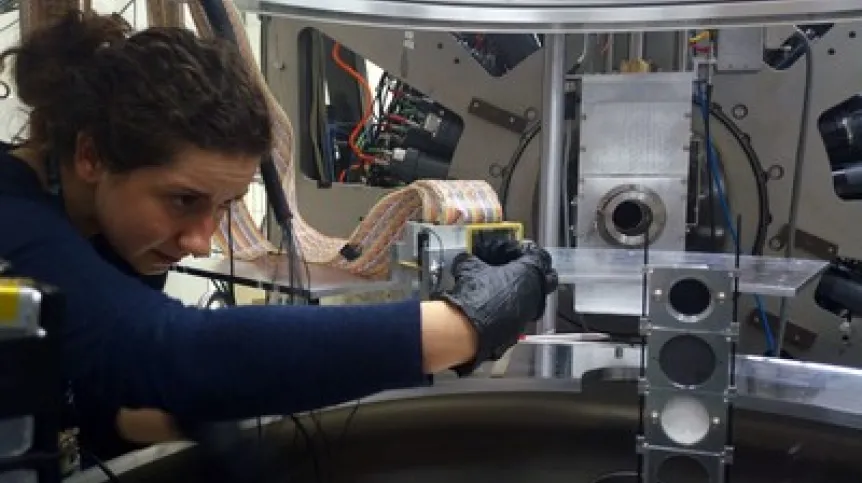
All chemical elements were formed in the process of the evolution of the Universe dominated by light atomic nuclei. The knowledge of light atomic nuclei has just been expanded thanks to accelerator studies conducted in Kraków on the specific excited states of carbon-13 nuclei.
The precise observation of phenomena occurring in atomic nuclei, especially of high-energy states, is an extremely difficult task from both a technical and theoretical point of view. However, there are varieties of high-lying excitations of atomic nuclei that, due to their specific structure, can be observed and interpreted with a high accuracy.
A European team of physicists tested a series of measurements of such states at the Cyclotron Centre Bronowice in Kraków. A beam of protons from the accelerator was collimated on carbon-13 targets. The researchers reported the results in a paper published in Physics Letters B https://doi.org/10.1016/j.physletb.2022.137398. Representatives of the Institute of Nuclear Physics PAS inform about the research results in a press release.
“Our latest result concerns a special type of excitation of carbon-13 atomic nuclei. These excitations, known as 'stretched' resonant states, are of interest to physicists, especially astrophysicists, for many reasons,” says Professor Bogdan Fornal from the Institute of Nuclear Physics PAS, who proposed this research topic together with Professor Silvia Leoni of Universita degli Studi di Milano and INFN Sezione di Milano in Italy.
He adds that as a result of the current successful experiment, it is possible to run a series of further measurements aimed at extending our knowledge of the properties of atomic nuclei of other light isotopes.
The behaviour of atomic nuclei excited to high energies is extremely difficult to observe because the particles that make up the nuclei enter into complex interactions involving as many as three of the four types of forces found in nature: strong, weak and electromagnetic.
“A nucleus in the energy state called stretched can be imagined as a system in which, under the influence of a collision with a proton from outside, only one proton or one neutron of the nucleus overcomes the energy gap and moves to an energy state in the so-called energy continuum,” says Dr. Natalia Cieplicka-Orynczak (IFJ PAN).
She adds: “In the continuum, different energy states of the nucleus can overlap, which radically hinders the description of the phenomena taking place and their understanding, and consequently also the interpretation of data from experiments. Stretched states are therefore so important because, on the energy ladder of energy shells in the atomic nucleus, they are one of the highest places where relatively simple yet precise observations can still be made.”
In this context, the main advantages of the stretched energy states of light atomic nuclei include the relative simplicity of their theoretical description. This makes possible to build models that illustrate the measurement results.
“The excellent compliance between theory and experience is proof that the knowledge gained from observations of stretched nuclear states should be considered reliable,” say the scientists.
Thanks to measurements at the Kraków cyclotron, funded by the Polish National Science Centre, it was possible to directly establish that the carbon-13 nucleus from the studied stretched state decays through two basic channels. In the channel that occurs most frequently, the nucleus emits a proton and transforms into the excited boron-12, which then emits a gamma quantum. In the second channel, carbon-12 is formed, accompanied by the emission of a neutron (not recorded in the experiment) and a gamma quantum.
Due to the importance of the research for understanding various nuclear processes, the series of experiments at the Cyclotron Centre Bronowice of the IFJ PAN will be continued. The physicists will now focus on atomic nuclei of nitrogen-14 and carbon-12. In the near future, an attempt will also be made to find extended nuclear states in boron-11B, the existence of which has not yet been clearly documented.
PAP - Science in Poland
lt/ ekr/ kap/
tr. RL













